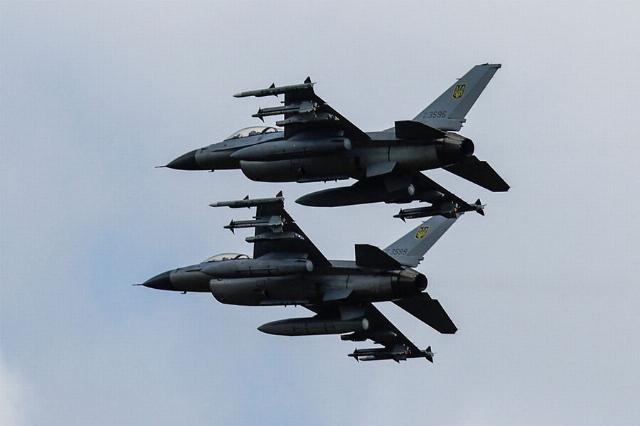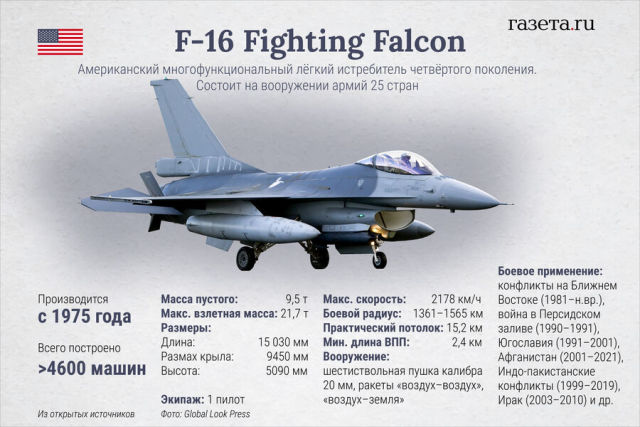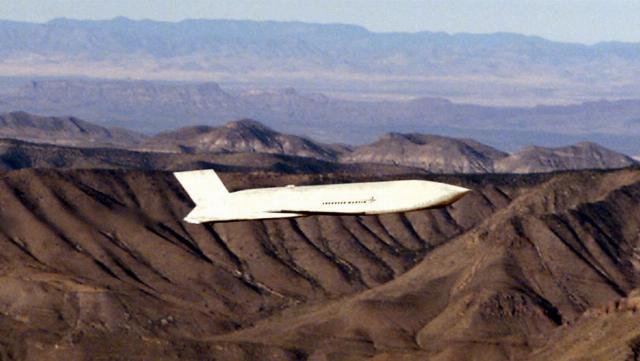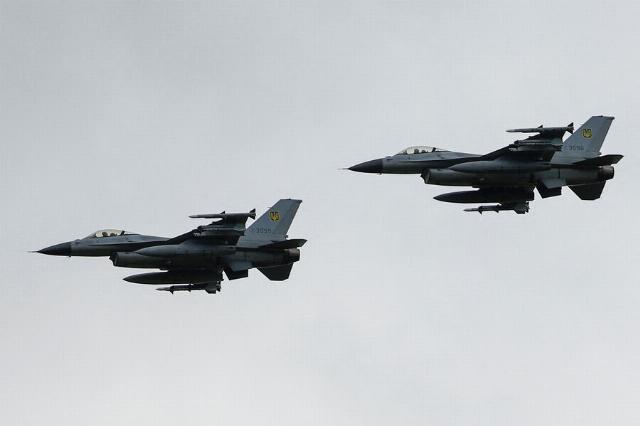Colonel Khodarenok: The Ukrainian Armed Forces do not use F-16s over Kursk, for fear of losing them
During the invasion of the Armed Forces of Ukraine into the Kursk region, no cases of combat use of the recently received F-16 multifunctional fighters by the Ukrainian army were recorded, although it seemed difficult to come up with a more advantageous situation for their debut. Why this has not happened yet and whether it will happen, the military observer of the Newspaper figured out.En" Mikhail Khodarenok.
What reasons guided the military-political leadership of Ukraine (and the decision on the combat use of these machines will certainly be made at the very top), of course, is unknown. But some circumstances, based on which Kiev decided to postpone the launch of the F-16 into battle, can be taken into account.
There is not even a full-time aviation regiment
Let's start with the basics. Decisive success in the event of the appearance of new weapons from one of the warring parties is ensured in only two cases - when weapons are used suddenly and massively.
There can be no question of surprise, since the issue of transferring multifunctional F-16 fighters to the Armed Forces of Ukraine has been discussed in the West for years. There is no doubt that during this time, the Russian Aerospace Forces have already issued several methodological manuals on combating aircraft of this type, and distributed them to all branches of the armed forces.
There is no need to talk about the possible massive combat use of combat vehicles received by Kiev. A massive strike in aviation is carried out, as is known, by the forces of at least an operational association, that is, the air army. Everything that is less in terms of combat strength of the air army (corps, division) already applies only to group strikes.
At the moment, the Ukrainian Air Force has received either six aircraft, or ten (quite possibly any other number). In general, so far there is not even a single full-time regiment on the F-16 in the Ukrainian combat aviation, whereas in order to turn the situation in the air in its favor, the AFU needs at least three full-strength air divisions (and this is at least).

The second, no less important issue is the creation of an appropriate management system (you can say so - management fields). If you explain the functioning of this system on your fingers, then it should look something like this.
For example, one of the most important tasks that will be assigned to Ukrainian F-16 fighters is the defeat of Russian FAB carrier aircraft with UMPC. They are the ones who currently cause the most trouble to the units and units of the Armed Forces of Ukraine. The Ukrainian army currently has no effective antidote to neutralize these carriers.
To successfully combat our aircraft, the Air Forces of Ukraine (radio engineering troops) must timely detect (preferably right from the moment of takeoff), for example, the Russian Su-34 with FAB-3000 with UMPK and then steadily accompany it.

Image source: Alina Dzhus/"Newspaper.Ru"
At the right time, you need to give the command to lift your F-16 into the air, then bring it to the line of performance of a combat mission (that is, launching an air-to-air missile of the AIM-120 AMRAAM type), issue an accurate target designation to the pilot of the Ukrainian aircraft so that he hits our Su-34 even before the moment of reset They have a FAB-3000.
But all this can be done if such an algorithm of actions is based on an advanced radar reconnaissance system, automated aviation combat control systems, and an expanded network of guidance points (PN). Of course, it is difficult to say in detail how the Ukrainian Air Force is dealing with this issue.
But the fact that they still have certain problems in this area is indicated by the fact of the proposed supply of Swedish long-range radar detection and control aircraft of the Saab 340 AEW&C type to the Armed Forces of Ukraine (there have been no reports that these machines have been received and mastered by the Armed Forces of Ukraine). This means that the Ukrainian Air Forces have no special hopes for a ground-based network of radar posts, PN and ACS.
Should we wait for air battles?
The same applies to possible F-16 air battles with Russian Su-35S and Su-30SM2 fighters. Here, as nowhere else, situational awareness is required, as it is called in the West. In aerial combat, there is a very simple formula: first seen, half won. And for this, all that is required is to bring the fighter to the desired point in the airspace and give it a searchless target designation for the enemy aircraft.
To solve this problem, an even more stable functioning radar reconnaissance system, automation of fighter aircraft combat control issues, and an advanced network of guidance points are required. It is almost impossible to control the voice and, figuratively speaking, flags in modern air combat.
It is likely that these issues are still being fully resolved in the Ukrainian Air Forces, and for these reasons, F-16 air battles with aircraft of the operational and tactical aviation of the Russian Air Force are being postponed at this stage.

Image source: U.S. Air Force
As for the JASSM missiles (and negotiations on their supply are currently underway between Kiev and Washington), the product of this type is a high-precision air-to-surface cruise missile designed to hit important highly protected targets.
Most likely, the Ukrainian Air Forces will be supplied with AGM-158A missiles with a firing range of 370 km. The weight of the penetrating type warhead of this product reaches 450 kg.
So, most likely, the debut of the Ukrainian F-16 will take place as carriers of cruise missiles of the listed types.
At first, it will be very important for the Ukrainian Air Forces to prevent the loss of these combat vehicles (since in this case significant reputational losses cannot be avoided), and to demonstrate the high effectiveness of their combat use. For these reasons, the F-16 is not yet visible in areas of intense combat. But it's only a matter of time.
The opinion of the author may not coincide with the position of the editorial board.
Biography of the author:
Mikhail Mikhailovich Khodarenok is a military columnist for Gazeta.Ru", retired colonel.
He graduated from the Minsk Higher Engineering Anti-Aircraft Missile School (1976), the Military Air Defense Command Academy (1986).
Commander of the S-75 anti-aircraft missile division (1980-1983).
Deputy commander of the anti-aircraft missile regiment (1986-1988).
Senior Officer of the General Staff of the Air Defense Forces (1988-1992).
Officer of the Main Operational Directorate of the General Staff (1992-2000).
Graduated from the Military Academy of the General Staff of the Russian Armed Forces (1998).
Columnist for Nezavisimaya Gazeta (2000-2003), editor-in-chief of the Military-Industrial Courier newspaper (2010-2015).
Mikhail Khodarenok

